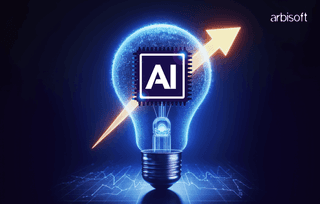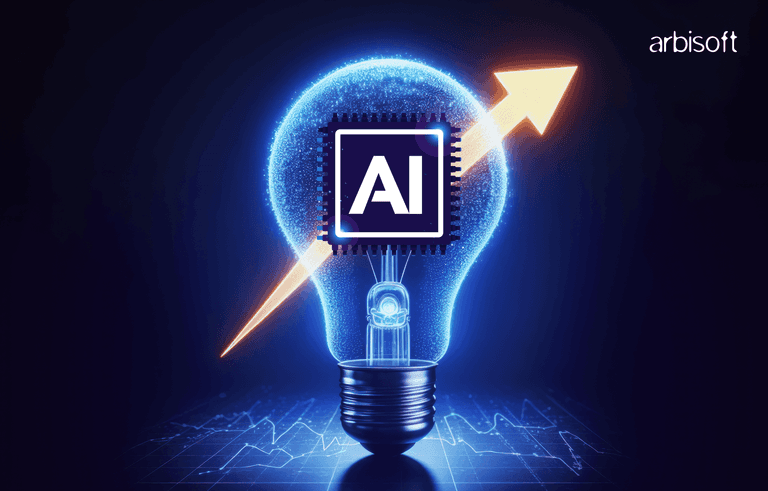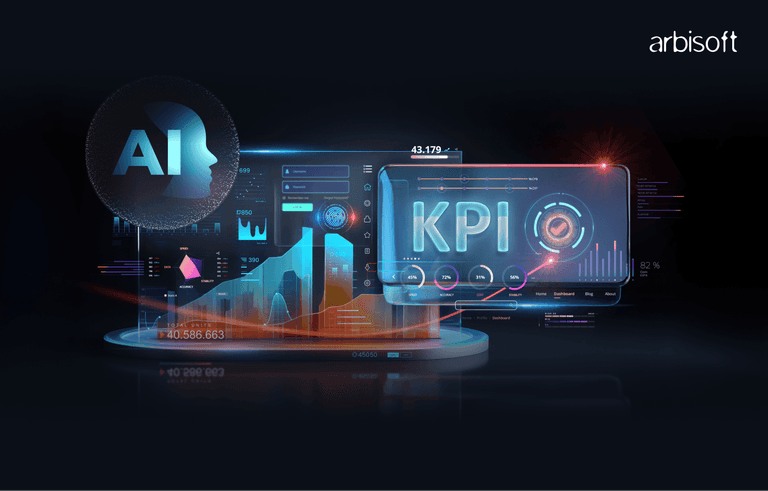We put excellence, value and quality above all - and it shows




A Technology Partnership That Goes Beyond Code

“Arbisoft has been my most trusted technology partner for now over 15 years. Arbisoft has very unique methods of recruiting and training, and the results demonstrate that. They have great teams, great positive attitudes and great communication.”
Transformer Architecture: Components and Real-Life Applications

The way we interact with language is undergoing a fascinating revolution, fueled by a class of AI agents: transformer-based generative language models. These powerful AI generative models are pushing the boundaries of what machines can achieve with words, promising a future where seamless communication, accurate translation, and even creative content generation become the norm. Transformer-based generative models stand out as a disruptive force, pushing the boundaries of what is achievable in the realm of generative AI.
The Transformer architecture has emerged as a game-changer, reshaping natural language processing, computer vision, and beyond. If you find yourself stepping into the world of Transformers with a sense of uncertainty, you are at the right place! This blog is your compass, guiding you through the intricacies of the Transformer architecture, from its fundamental components to real-life applications.
If you're new to the world of Transformers, you might want to start with our previous blog, which provides a comprehensive overview of the GenAI and its fundamentals in depth.
Let us explore the Transformer language model, its core mechanisms, and its impact on modern AI applications.
Masters of Language Modeling
At the crux of this revolution are GPT-3, GPT-4, T5, and BERT – colossal neural networks trained on tremendous amounts of text data. Their competence lies in understanding the complexity of language in innovative ways.
Their secret weapon? The transformer architecture.
It is a sophisticated system that intricately analyzes how words relate to each other within a sentence and across extensive stretches of text. This "attention" mechanism unlocks the model's ability to grasp context, meaning, and even style. Let’s take a look at how.
Understanding Transformers and Generative AI
Transformers, introduced by Vaswani et al., have redefined the landscape of natural language processing (NLP). The crux of their architecture lies in self-attention mechanisms, allowing the model to selectively focus on different parts of the input sequence. This not only facilitates capturing complex dependencies but also enables parallelization, making training more efficient.
Generative AI, as a concept, involves training models to generate content. The fusion of Transformer architecture with generative capabilities has given rise to a paradigm shift in creative tasks, empowering models to generate diverse forms of data, be it text, images, or more.
The Genesis of Transformers
Before we plunge into the depths of the Transformer architecture, let's briefly set the stage. Traditional neural networks, like recurrent and convolutional models, had their limitations when dealing with sequential data, hindering their ability to effectively learn relationships in tasks involving extensive contextual information. Enter the Transformer, a paradigm-shifting architecture introduced by Vaswani et al. in their seminal paper, "Attention is All You Need."
Let's now delve into the key components of Transformer models to gain a comprehensive understanding of this groundbreaking architecture.
Key Components of the Transformer
Here, we explore the fundamental building blocks that define the Transformer architecture and enable its transformative capabilities.
1. Self-Attention Mechanism
This is the core building block of the Transformer. Self-attention allows the model to weigh different input positions differently when making predictions at a particular position.
The self-attention mechanism computes attention scores for each element in the input sequence, allowing the model to focus on only the relevant information.
2. Multi-Head Attention
To capture different aspects of the input sequence, the Transformer uses multiple attention heads in parallel. Each head operates on a linear projection of the input, and their outputs are concatenated and linearly transformed.
This helps the model to attend to different parts of the input sequence simultaneously, enabling it to learn more complex relationships.
3. Positional Encoding
Since the Transformer lacks inherent sequential information, positional encoding is added to the input embeddings to give the model information about the position of each token in the sequence.
Various positional encoding schemes, such as sine and cosine functions, are used to provide the model with information about the order of tokens.
4. Encoder and Decoder Stacks
The Transformer consists of an encoder stack and a decoder stack. The Encoder encodes the input sequence generating a feature representation which is then passed to the Decoder that uses this representation to generate an output sequence.
Each stack is composed of multiple identical layers, and each layer contains a multi-head self-attention mechanism and a position-wise fully connected feed-forward network.
5. Feed-Forward Neural Networks
After attention mechanisms, each layer in the Transformer contains a feed-forward neural network. This network is applied independently to each position and consists of two linear transformations with a non-linear activation function in between.
6. Normalization Layers
Layer normalization is applied before the input is fed into the self-attention and feed-forward sub-layers. It helps in stabilizing the training process.
7. Residual Connections
Each sub-layer in the encoder and decoder has a residual connection around it. The output of each sub-layer is added to its input, and this sum is then normalized. This helps with the flow of gradients during training.
8. Masking in the Decoder
To prevent positions in the decoder from attending to subsequent positions, masking is applied. This ensures that during the generation of each token, only the previous tokens are considered.
These components work together to make the Transformer model capable of handling sequential data and capturing long-range dependencies, making it particularly effective in natural language processing tasks.
Real-Life Transformer Models
Now that we've laid the groundwork, let's explore how the Transformer architecture manifests in real-life models that have reshaped the AI landscape.
1. BERT (Bidirectional Encoder Representations from Transformers)
BERT introduced bidirectional context understanding by leveraging a Masked Language Model (MLM). It uses a multi-layer bidirectional Transformer encoder.
The model is pre-trained on large corpora by predicting masked words in a sentence, allowing it to capture context from both left and right directions.
BERT in Action
Let's consider a simple sentence: "The quick brown fox jumps over the lazy dog." In a traditional left-to-right language model, the context for each word is built only from the preceding words. However, BERT, being bidirectional, considers both the left and right context.
Here's how BERT might process this sentence in a masked language model task:
Original Sentence: "The quick brown fox jumps over the lazy dog."
Masked Input: "The quick brown [MASK] jumps over the lazy dog."
Now, BERT is trained to predict the masked word. Let's say it predicts the masked word as "dog." During training, the model learns not only from the context on the left side of the masked word ("lazy") but also from the context on the right side ("jumps over the").
So, BERT captures bidirectional context understanding by considering both the words to the left and right of the masked word during pre-training. This allows the model to understand the relationships and meanings in a sentence more comprehensively.
This bidirectional context understanding is a key feature of BERT that helps it perform well in various natural language processing tasks, such as question answering, sentiment analysis, and named entity recognition.
Impact
BERT has had a profound impact on various natural language processing (NLP) tasks, such as question answering, sentiment analysis, and named entity recognition.
By pre-training vast amounts of text data, BERT learns rich contextualized representations that can be fine-tuned for specific downstream tasks.
BERT's versatility lies in its ability to adapt to different tasks through fine-tuning, making it a go-to choice for a wide range of NLP applications.
2. GPT (Generative Pre-trained Transformer)
GPT models, such as GPT-3, employ a decoder-only architecture for autoregressive text generation.
During pre-training, these models learn to predict the next word in a sequence, capturing contextual information for coherent text generation.
Autoregressive Decoding
GPT models excel in autoregressive decoding, generating sequences of text one token at a time based on the context provided by preceding tokens.
The large-scale language models produced by GPT have demonstrated remarkable capabilities in creative writing, story generation, and conversation.
Poetic Duel: Human vs. AI - Can You Guess Who Wrote Which?
Poem 1:
In the moonlit night, shadows dance with grace,
Whispers of the wind, a soft embrace.
Stars above tell tales of the ancient lore,
Nature's symphony, forever to adore.
Poem 2:
Beneath the moon's soft, silvery glow,
Shadows waltz, a rhythmic, cosmic show.
The wind's murmur weaves a timeless theme,
A celestial ballet in nature's dream.
Now, which one do you think was written by a human author and which one by GPT? Feel free to make your guess!
[The first poem was written by a human author, and the second one was generated by GPT. It showcases the remarkable ability of GPT models to mimic the style and creativity of human writing.]
3. Vision Transformers (ViTs)
Vision Transformers (ViTs) extend the Transformer architecture to computer vision tasks. Images are divided into fixed-size patches, and the spatial relationships between these patches are captured using self-attention mechanisms.
a. Spatial Information Processing
ViTs have shown impressive results in image classification tasks, challenging the traditional Convolutional Neural Network (CNN) approaches.
By leveraging self-attention, ViTs can capture long-range dependencies in images, allowing them to recognize complex patterns and relationships.
b. Cross-Modal Applications
The success of ViTs has paved the way for cross-modal applications, where transformer-based models can seamlessly integrate information from both text and images.
These transformer models showcase the adaptability and effectiveness of the architecture across diverse domains, ranging from language understanding and generation to computer vision tasks. The ability to pre-train on large datasets and fine-tune for specific applications has become a cornerstone in contemporary AI research and applications.
Evolution at Warp Speed
The narrative of these generative AI models is one of breathtaking evolution. GPT-3, a text generator was just the beginning. Its successor, GPT-4, boasts a staggering but rumored 1 to 1.76 trillion parameters! This exponential growth in complexity translates to outputs that are increasingly human-like and a widening scope of tasks.
The versatility of Transformer-based generative models is exemplified by their success across diverse domains. In natural language tasks, they have demonstrated state-of-the-art performance in tasks like text completion and translation. For instance, models like OpenAI's GPT-3 can generate human-like responses in conversational contexts, showcase creativity in storytelling, and even write code snippets based on textual prompts.
In the realm of image generation, Transformer-based models like DALL-E have showcased the ability to generate novel images based on textual descriptions, showcasing a level of creativity and abstraction previously unseen in generative models.
In the field of music, models like MuseNet can compose diverse genres of music, demonstrating the potential of Transformer-based models in creative arts beyond traditional text and image generation.
Transformer-Based Generative Models: Addressing Challenges
It's crucial to acknowledge that this technology is still evolving, and challenges remain. Issues like bias, factual accuracy, and responsible use require careful consideration. Yet, with thoughtful development and ethical stewardship, transformer-based generative models have the potential to reshape the way we communicate, learn, and create.
While Transformer-based generative models have achieved remarkable milestones, challenges persist. Training large-scale models demands substantial computational resources, highlighting some transformer architecture limitations that need to be addressed. Researchers are actively working on optimizing architectures and training procedures to make them more efficient and accessible.
Ethical considerations, such as bias in generated content, remain a critical focus. The responsible development of AI involves addressing and mitigating biases to ensure fair and unbiased outcomes.
The Future Unfolds
As we marvel at the present capabilities of transformer-based generative models, it's equally exciting to contemplate the future. The continuous evolution of these models promises even more astonishing feats. Imagine AI systems that not only understand language but also empathize and adapt to human emotions. The potential applications in therapy, customer service, and entertainment are boundless, especially when paired with cutting-edge predictive analytics solutions that help anticipate user needs and market trends.
One of the most promising areas of development is the exploration of new types of generative AI models, which aim to balance model size and computational efficiency, such as the use of sparsity or low-rank approximation techniques. Recent advances in the field involve the integration of diffusion models with Transformer architectures. This hybrid approach aims to synergize the strengths of both models, enhancing generative capabilities while addressing certain limitations observed in standalone Transformer models.
To Sum Up
As we conclude our exploration into the Transformer architecture, remember that this journey is just the beginning of your exploration of Gen AI. With the support of comprehensive AI development services, businesses can effectively implement these groundbreaking technologies. The Transformer's ability to handle sequential data, coupled with its real-life applications in language and vision tasks positions it as a pivotal player in the AI landscape. For a more detailed exploration of navigating transfer learning, don't hesitate to check out our next blog.
























